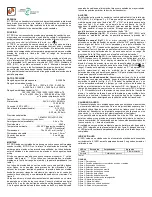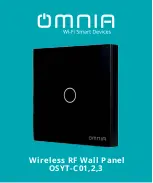
5.7
Concentration measurement
The Liquisys M can convert conductivity
values to concentration values.
Since the relationship between concentration
and conductivity also depends on the
temperature, the conversion is performed
based on a user-defined field (three
variables: temperature, conductivity,
concentration).
The calculation requires a field limited by
user-defined upper and lower limits (the
8 values depicted in Fig. 5.16). The expected
measured values must be located in the
range between the curves defined by the user
(hatched area).
The curve defined by the user must rise
monotonically (as shown in Fig. 5.16) or fall
monotonically.
Note:
The temperature coefficient is
determined as described in chpt. 5.6;
the corresponding concentration is
to be determined separately.
C-LF-T.CDR
Conductivity
C
onc
ent
ra
ti
on
T
1
T
2
T
1
< T
2
Fig. 5.16
Relationship among
concentration,
conductivity and
temperature
(qualitative representation)
Coding
Field
Selection or range
Factory setting
Display
Info
K
Function group
CONCENTRATION
(S version only)
Four different concentration fields
can be entered in this function
group.
K1
Selection of
concentration
curve to be used
to calculate the
display value
1
1 ... 4
The curves are independent of
each other, i.e. four different
curves can be defined.
K2
Selection of table
to be edited
1
1 ... 4
When editing a curve, another
curve should be used to
calculate the corresponding
values (see K1).
K3
Selection of table
option
read
edit
This selection applies to all
concentration curves.
K4
Enter number of
triplets
1
1 ... 10
Each triplet consists of three
numeric values.
Factory settings are printed in
bold
face;
base version does not include functions in italics.
K
CONCENTRA
K1
1
act.Curve
K2
1
Table
K3
read
Table
K4
No.Elem.
1
LM253E5D.CHP
Liquisys M CLM 223 / 253
Instrument configuration
Hauser
45
















































